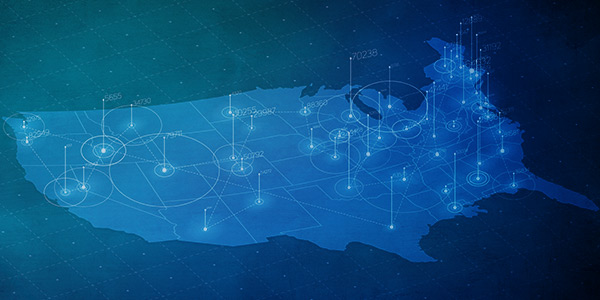
While the names may sound similar, geotargeting and geofencing are two distinct types of geolocation marketing. Each plays a unique role in achieving specific ad campaign objectives. However, they are frequently confused, even by experienced marketers.
It’s no surprise that sometimes geotargeting and geofencing are used interchangeably. However, having a thorough understanding of the differences between geotargeting and geofencing can allow marketers to better gauge when to use each tactic.
What is geotargeting?
Geotargeting is a type of advertising that serves messaging to consumers based on their geographic locations by leveraging location data. With geotargeting, brands can serve messaging that’s relevant to a specific audience based on their physical location.
Learn more about geotargeting, and Adelphic’s geotargeting capabilities, in Part 1 of this series.
What is geofencing?
Geofencing allows marketers to create a virtual “fence” around a specific geographical location. People who then enter the “fenced-off” area can be reached with ads via their devices – for example, ads on their smartphones or ads on their laptops.
This strategy can be used by marketers to reach specific audiences at specific locations, such as individuals within a stadium or attending conferences at a convention center.
What is the difference between geotargeting and geofencing?
The best way to understand the difference between geotargeting and geofencing is to break down their names. Geotargeting allows for targeting individuals within a certain location that also factors in their interests, preferences and unique characteristics.
Geofencing, on the other hand, creates a virtual fence around an area in which ads reach anyone who enters. Ads are served to all of the individuals within that specific area, regardless of their specific qualities or behaviors.
How does geofencing work?
Imagine an invisible line. Once a device crosses that line, it is served an ad by the brand running a campaign with geofencing. Geofencing can be applied to areas big or small, anywhere from a concert venue that holds 5,000 people to an entire neighborhood or city limits.
Geofencing is used by both B2B and B2C marketers to reach audiences with localized messaging. For example, a bakery could choose to geofence a surrounding 10-block radius. Anyone who enters that radius could be served an ad about the bakery’s services, which then helps drive traffic to their business from people who are already in the area.
How accurate is geofencing?
How accurate geofencing is depends largely on the location data partners you’re working with in your DSP of choice. Partners’ accuracy hinges on a number of factors, including the type of technology they’re using (for example, GPS vs. IP address) as well as privacy settings at the user level.
How does geotargeting work?
Geotargeting analyzes location data to serve localized ads relevant to location or interest. It factors in where potential audiences are at the present time, what might interest them and what areas they’re searching on the internet, using a brand’s chosen audience segmentation strategies. This can be highly useful in delivering relevant ads with potential to engage both new and existing customers.
One example of geotargeting would be a boat rental business targeting consumers in an area around a beach. By doing so, they’re reaching people who are more likely to use their services and rent a boat based on where they’re located.
How accurate is geotargeting?
As with geofencing, the accuracy of geotargeting largely depends on the location data partners you’re working with, as well as consumers’ privacy settings. The “gold standard” in geotargeting, so to speak, is full GPS precision. However, accuracy can be impacted at numerous levels, including at the user or app level, as location sharing is often an opt-in process.
When would you want to use geotargeting vs. geofencing?
While geotargeting and geofencing can both help marketers achieve their campaign objectives, it’s important to understand exactly when you’d want to use one tactic versus the other.
When to use geotargeting
Geotargeting is best for marketers who want to reach narrower audiences, like the boat rental business example above. It’s a smart option for brands in more specific product or service categories that cater to niche groups of people with a local angle.
When to use geofencing
Geofencing, meanwhile, is better suited for marketers aiming to reach larger demographics within a certain area. An example of a brand that could benefit from geofencing is a bookstore looking to engage students and encourage them to come into their shop. By leveraging geofencing, the bookstore could target an entire university, which would fit into their ideal customer demographic.
When considering whether geotargeting or geofencing is right for your brand, think about your audience, products and/or services. Depending on who you want to reach and why, location-based marketing can be used to boost your brand and build revenue.


 Follow us
Follow us